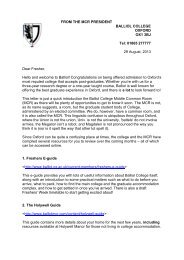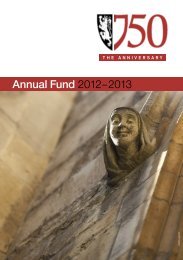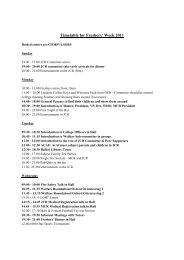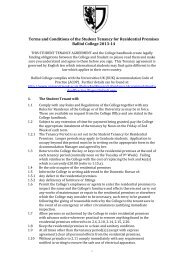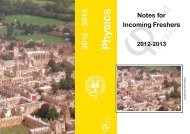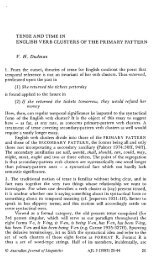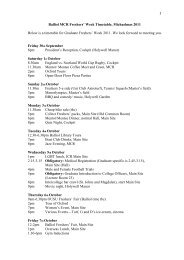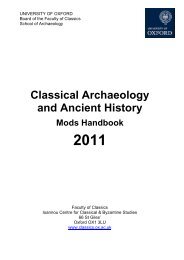x - Balliol College - University of Oxford
x - Balliol College - University of Oxford
x - Balliol College - University of Oxford
Create successful ePaper yourself
Turn your PDF publications into a flip-book with our unique Google optimized e-Paper software.
SJ Roberts - July 2011 Revision 1/ page 8<br />
5 Complex Algebra<br />
Complex Algebra is no longer in the "Common Core" at A-level, though<br />
some courses contain it. Whether you are familiar with it or not, you can<br />
read about it in Chapter 7 <strong>of</strong> Stephenson --- or indeed in many A-level<br />
texts. We will use the notation that a complex number z x<br />
iy <br />
,<br />
where x is the Real part <strong>of</strong> z, y is the Imaginary part <strong>of</strong> z, and i is the<br />
Imaginary unit such that 1<br />
2<br />
i . That is, x Rez<br />
and y Imz<br />
electrical engineering j is used instead <strong>of</strong> i to avoid confusion with the<br />
symbol for electric current.<br />
. In<br />
31. Evaluate (i) (1+2i) + (2+3i); (ii) (1+2i)(2+3i); (iii) 3<br />
1 2i<br />
and plot the<br />
resulting complex numbers on an Argand diagram (shown above).<br />
32. If z x<br />
iy , its complex conjugate is defined as z x<br />
iy <br />
2 2<br />
Show that zz<br />
x<br />
y <br />
.<br />
.<br />
33. By multiplying top and bottom <strong>of</strong> the complex fraction by the<br />
1<br />
2i<br />
complex conjugate <strong>of</strong> (3+4i), evaluate .<br />
3 4i



